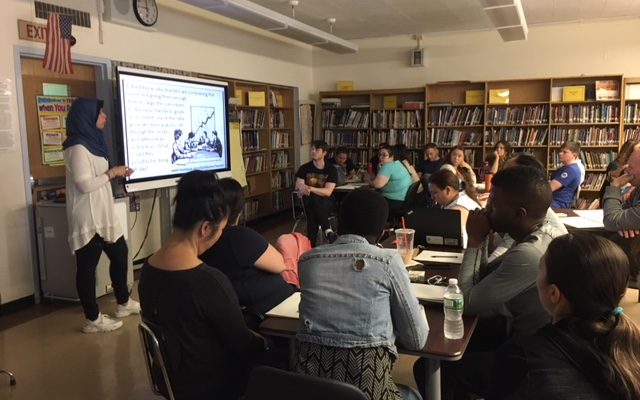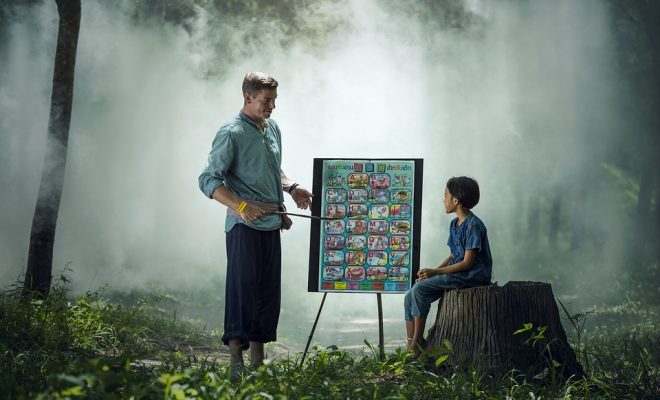The Power of 140 Characters

**The Edvocate is pleased to publish guest posts as way to fuel important conversations surrounding P-20 education in America. The opinions contained within guest posts are those of the authors and do not necessarily reflect the official opinion of The Edvocate or Dr. Matthew Lynch.**
A guest post by Tracey Rains
This year is my year to fully join the online world. Until 2015, I had steadfastly refused to Tweet, Link in, or otherwise have an online presence. I’m not really sure why I decided to dive in now, but I’m so glad I did. As a teacher, I had always embraced technology in my classroom in one form or another. I loved my whiteboard; I communicated with students and parents via online messaging and a text service; I administered tests via an online service. But I was not considering how teens use technology.
I wasn’t really tapping into how technology could reach my students because I was thinking only as an adult. I was not thinking about how my students use technology. Students have a natural affinity for technology. According to statistics reported by PEW Research Center, technology is inextricably entrenched in teens’ lives. They report that “92% of American teens go online daily, including 24% who go online ‘almost constantly.’” Given how much time teens spend online, it is even more important for educators to help them to see the Internet not just as a toy, but as a tool. Samantha Goodyear, a high school student said on the Huffington Post, “The youth of today have a voice like we never have before. Social media can be an awesome environment to encourage each other, communicate with people and share our stories.” As a teacher, I have found that tapping into that excitement about social media has allowed me to make learning more enjoyable for my students.
Once I acknowledged that the social side of the Internet was missing from my use of technology, I knew it we time for me to Tweet. Omitting social media from my instruction was preventing me from communicating as effectively as possible with my students. One aspect of communication that I teach is tailoring a message to the audience, and I realized that I was guilty of not targeting my own audience. I needed to practice what I preach!
I’ve been using Twitter with my classes for eight weeks now, and I continue to be amazed by the versatility of the little bird. I started out by posting assignments. I asked students to use one of our current vocabulary words in a sentence in a tweet. This sounded simple enough just to start with. I thought that this would be beneficial because it would make the students think about the words enough to distill a 140 character sentence. It did. That would have been good had it ended there, but it didn’t. Students reacted to each others’ sentences, so there was peer learning going on. When a student misused a word, I was able to instantly provide correction. Students’ reactions to this were very positive.
I moved on to literature assignments, asking them to tweet in the voice of a character from Romeo and Juliet about something in whatever Act we were testing on the next day. What I discovered there was that Twitter is also a remarkable tool for fostering creativity. Students made up fun hashtags like #pityparty, #getalife and #mynameshalldie. Then, they started having conversations with each other. Instead of giving a perfunctory thought to studying the Act, they had spent quality time being creative with the material and engaging with each other.
Their enthusiasm for Twitter inspired me. I began posting links for enrichment materials. I posted a link from the BBC on Shakespeare’s original pronunciation, and another with examples of Middle and Old English. I’ve always thought that some of the best learning occurs when extra-curricular materials are brought in, but my school is trying out a new schedule that has us all very pressed for time in our classes. This is a great way to still provide the extra materials! Many of my students availed themselves of these videos and commented to me about them in class.
Another side of Twitter that I have found to be valuable is the Direct Messaging feature. Students who never speak up in class have DMed me to ask me for help with something they didn’t understand or to see if they could try something again. (The answer is almost always yes; I’m a big believer in second chances.) And while it is important for these students to learn to approach their teachers and professors in person this is a good place for them to start.
I may not be completely enamored with Twitter, but the more I use it, the more I like it. I find that since my students are naturally receptive to this format, my use of it enhances my ability to connect with them.
Read all of our posts about EdTech and Innovation by clicking here.
______________
Tracey Rains is an award winning educator with over 25 years of teaching experience. In addition to impacting lives through teaching, Tracey runs two successful educational websites (Logophiles Unleashed and Socrates Underground) and is actively involved in curriculum development and implementation.






